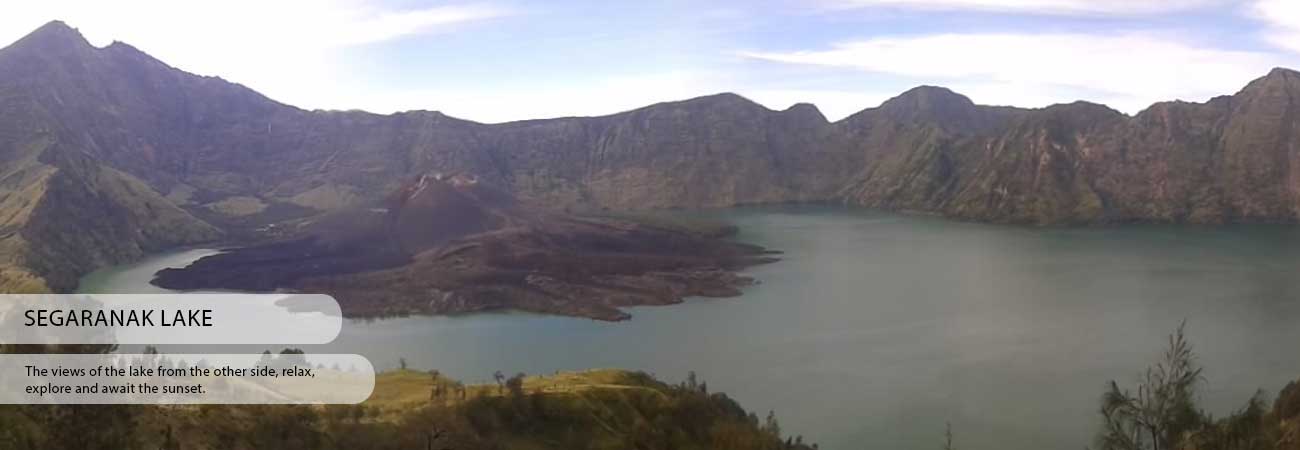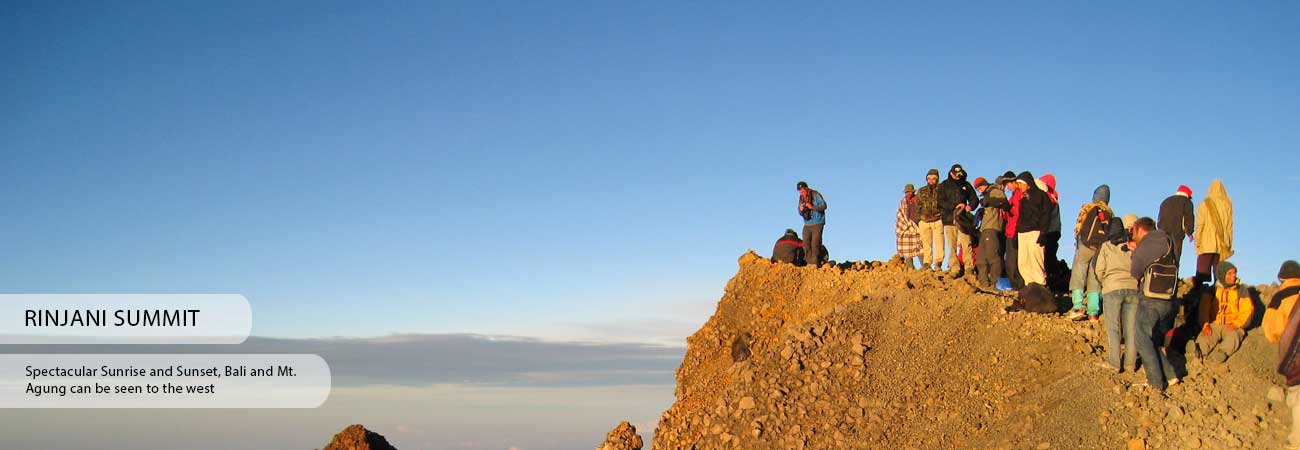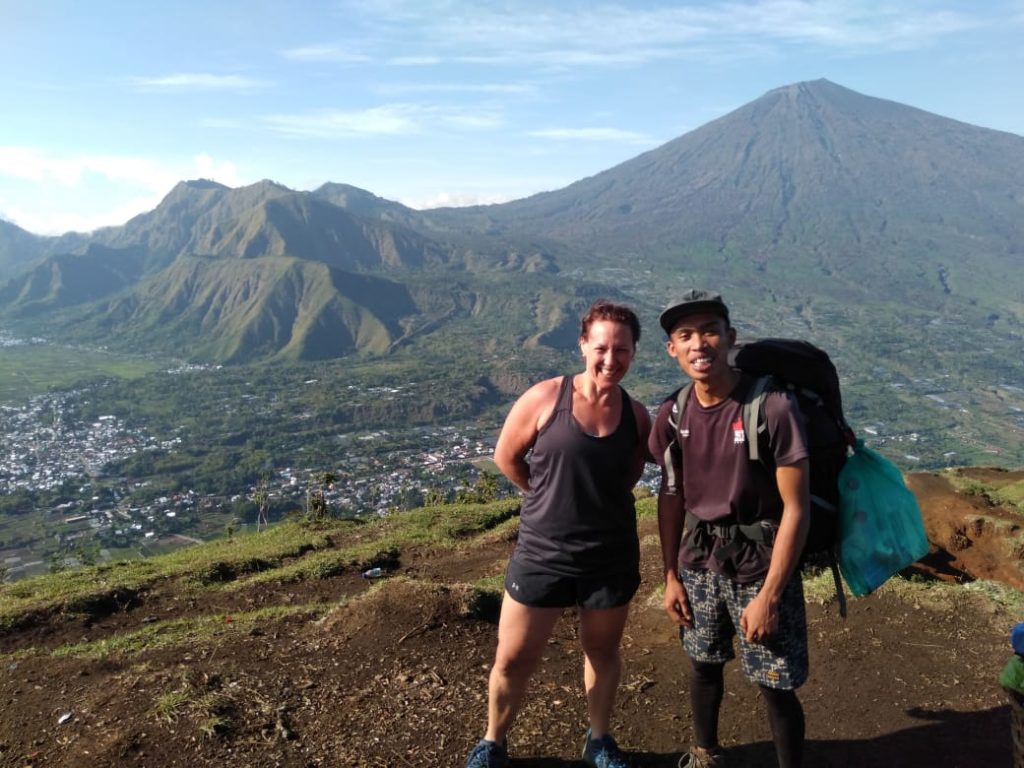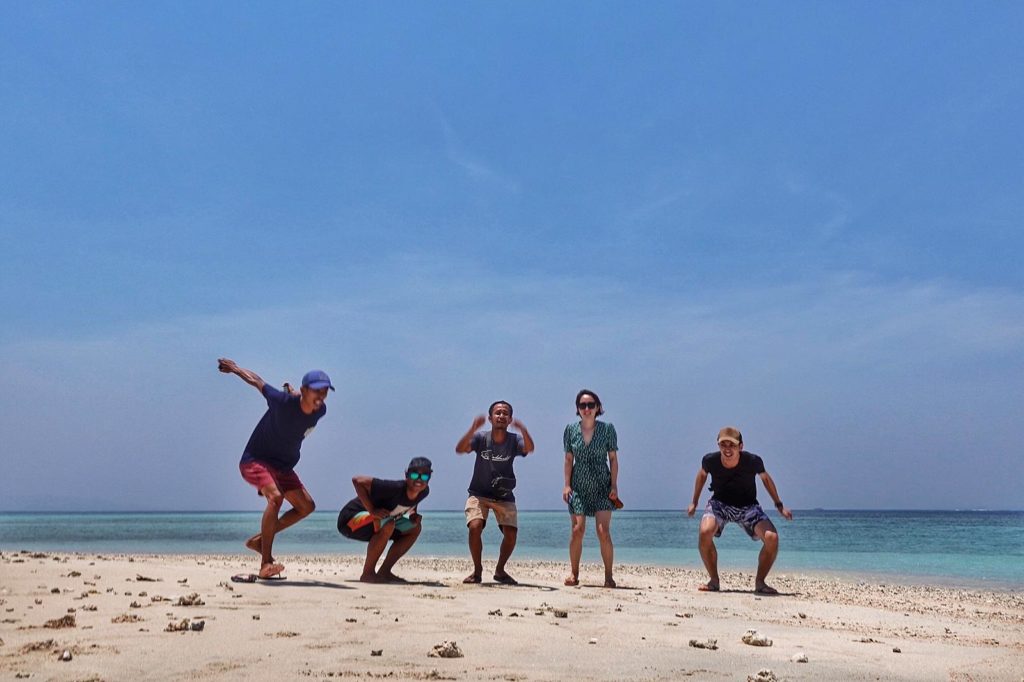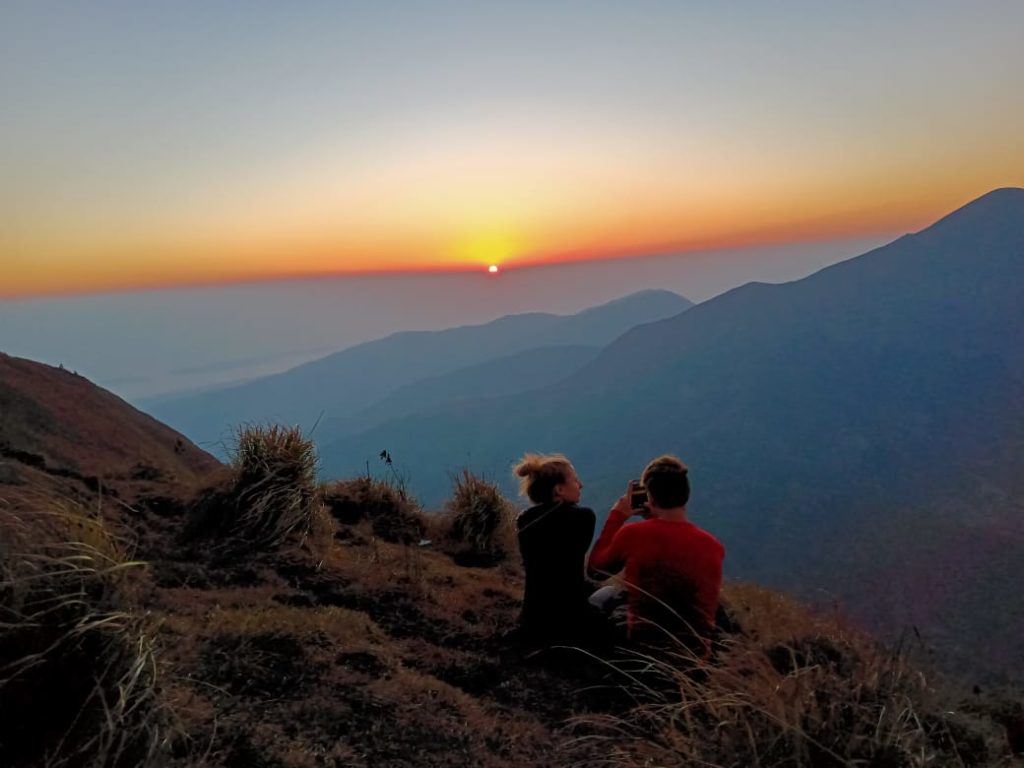Mount Rinjani in Lombok

Mount Rinjani is an active volcano in Indonesia on the island of Lombok. Administratively the mountain is in the Regency of North Lombok, West Nusa Tenggara (Indonesian: Nusa Tenggara Barat, NTB). It rises to 3,726 metres (12,224 ft), making it the second highest volcano in Indonesia.
The park covers an area of 41,330 ha on the northern part of Lombok. Named after Indonesia’s second highest volcanic peak outside of West Papua, the peak of Gunung Rinjani (3,726m) dominates the landscape. Within the crater is the spectacular Segara Anak lake and the still-active volcano Gunung Baru (2,363m). It is surrounded by a further 66,000 ha of Protection Forest and covers the four administrative district of West, East, north and Central Lombok. The park ecosystem is in the transitional zone between Asia and Australia (Wallace zone). Average rainfall is about 3,000 mm annually. Gunung Rinjani is rich in a variety of flora, fauna and vegetation types. On the south western side of the mountain is the most eastern extent of primary rainforest in Nusa Tenggara. This gives way to monsoon forest and drier climate in the east, and savannah in the north east. Notable flora includes the everlasting edelweiss flower (Anopheles viscid), tiger orchid (Vanda sp.), alang-alang grass (Imperata cylindrical), cemara trees (Casuarinas trifoliate and Casuarinas occidental).
For the people of Lombok, Sasak, and Balinese alike, the volcano is revered as sacred place and abode of deities, Segar Anak crater is the destination of thousands of pilgrims who place offering in the water and bathe away disease in the hot springs, the endemic duck Belebis is found here and several species of fish are recorded. Mount Rinjani, one of the over 40 national parks throughout Indonesia, was established in 1997.
Over 20 villages surround Rinjani and there are many routes up the mountain, but the main access is from Senaru in the north and Semabalun Lawang to the east. The challenging three-day Rinjani Trek route from Senaru to the crater rim (Pelawangan), down to the stunning crater lake and then on to Sembalun Lawang, is considered one of the best treks in South East Asia.


